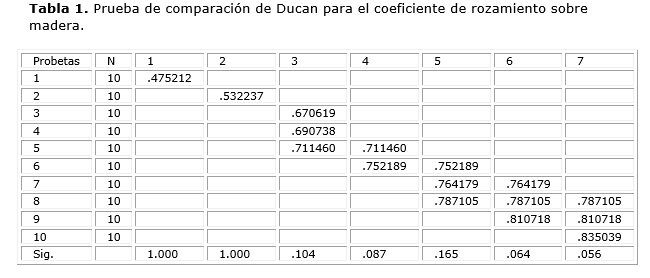Variation of the pith-bark friction coefficient of the species Quercus cubana A. Rich in Pinar del Rio
Main Article Content
Abstract
Downloads
Article Details
References
DE LA PAZ , C. VELÉZ S. y CEJA, J., 2006. «Anatomía de la madera de ocho especies de Quercus (FAGACEAE) de Oaxaca, México». - Revista Madera y Bosques, vol 12, no.1, pp 63-94.
EGAS, A., F., 1998. Consideraciones para elevar los rendimientos en aserraderos con sierras de banda. Tesis inédita por el grado de Doctor en Ciencias Forestales. Pinar del Río, Cuba: Universidad de Pinar del Río «Hermanos Saíz Montes de Oca».
HERMANO, L. y HERMANO, A., 1951. Flora de Cuba. S.l.: Colegio La Salle.
HOWARD, R.A., 1992. Review of Phytogeography and Vegetation Ecology of Cuba. Rhodora [en línea], vol. 94, no. 877, pp. 103-105. [Consulta: 23 noviembre 2018]. ISSN 0035-4902. Disponible en: https://www.jstor.org/stable/23313177.
IBAÑEZ, A., 2002. Propiedades y uso de 50 especies maderables que crecen en Cuba. La Habana, Cuba: Ministerio de la Agricultura. LAZO, D.A.Á.,
PAES, J.B. y SANTOS, R., 2013. Tecnologia da madeira [en línea]. S.l.: Editorial Académica Española. [Consulta: 23 noviembre 2018]. ISBN 978-3-8473-5576-2. Disponible en: https://www.morebooks.de/store/es/book/tecnologia-da-madeira/isbn/978-3-8473-5576-2.
MAGAÑA RUEDA, V., LUIS PÉREZ, J. y CONDE, C., 1998. «El fenómeno de El niño y la oscilación del sur. Sus impactos en México». Revista Ciencias. Revista de cultura científica [en línea], vol. 51, pp. 14-18. [Consulta: 23 noviembre 2018]. Disponible en: http://www.revistaciencias.unam.mx/es/108-revistas/revista-ciencias-51/907-el-fenomeno-del-el-nino-y-la-oscilacion-del-sur-sus-impactos-en-mexico.html.
SAMEK, V., 1973. Repositorio Digital de Informacion: Regiones fitogeográficas de Cuba. Acad. Cienc. de Cuba. Serie Forestal [en línea], vol. 15, no. 1-63. [Consulta: 21 noviembre 2018]. Disponible en: http://webcache.googleusercontent.com/search?q=cache:ogLuFo7RfwwJ:repositorio.geotech.cu/jspui/handle/1234/1453+&cd=1&hl=es&ct=clnk&gl=cu&client=firefox-b.
VIGNOTE, S. y JIMENEZ PERIS, F.J., 2016. Tecnología de la madera. España, Madrid: MAPA- Mundi-Prensa.


